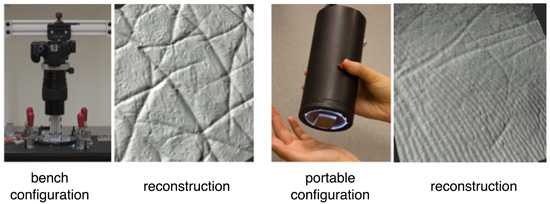
X is one of five vowels (A, E, I, O, and U). Speech Brief description xF0 Basic pitch of X. If you have an application where HALCON’s Photometric Stereo technique might be able to help you, then please contact the Multipix sales team. For these applications, laser triangulation or depth-from focus will produce more accurate results. This is due to errors that result if assumptions about the lighting (parallel rays with even intensity distribution) and surface reflectivity (surface refects light equally in all directions) are not met, or to the effect of cast shadows creating ambiguities in the data. While Photometric Stereo can produce 3D surface reconstructions in the form of relative height maps, it is not suitable for absolute 3D measurement or reconstruction applications requiring a high degree of accuracy. The curvature image, derived from the surface gradient, significantly improves contrast between the characters and the background thereby simplifying segmentation of the characters for classification. Other applications that can benefit from Photometric Stereo include optical character recognition of embossed, engraved, or raised characters such as those found on tires, toothpaste tubes, printed braille, etc. With conventional 2D imaging, this is often a very difficult defect to detect, yet one that manufacturers are very eager to catch.

Using the surface curvature image, however, the defects are immediately visible.įigure 5 uses the curvature image that is obtained through Photometric Stereo to detect a wrinkle in a shampoo bottle label. In this application, the texture of the material as well as the lighting make detecting these defects nearly impossible. Notice the texture of the print as well as the reflective quality of the surface would make detection of this hole extremely difficult using traditional methods.Īnother example, shows the detection of small chips or dings in the surface of a tile flooring. print, from a 3D surface and determining the surface curvature of an object, photometric stereo can identify small defects that may otherwise be undetectable using conventional 2D image processing techniques.įigure 3 demonstrates how Photometric Stereo is used to locate a small hole in the printed foil backing of a blister package. Figure 2 demonstrates how the albedo image eases the inspection of leather for unwanted defects by reducing the glare and shadows caused by directional lighting.īy eliminating the 2D texture, e.g. This can be used to enhance images where lighting effects make accurate inspection difficult. Photometric Stereo also estimates the albedo, or “colour” of the object independent of illumination effects such as shading and glare. This is useful for relative 3D reconstructing of a surface. In HALCON, Photometric Stereo estimates the surface normals of an object which can then be used to generate a height map where pixel values represent the relative height of an object’s surface.

In each image, the scene is illuminated from a different known angle (see figure 1 on the right).

So first, lets explain how it works…Photometric Stereo is an imaging technique th at uses multiple images of a stationary object taken from a single camera with a fixed point of view. Photometric Stereo also improves segmentation of engraved, embossed, or raised characters for OCR, reduces or eliminates unwanted illumination effects for improved inspection accuracy, and enables 3D reconstruction of continuous surfaces. This technique is especially useful for the detection of small surface defects. Photometric stereo is a highly effective method for separating the 3D shape of an object from its 2D texture.
#Photometric stereo software software#
HALCON’s Imaging Software technique ‘Photometric Stereo’ explained


 0 kommentar(er)
0 kommentar(er)
